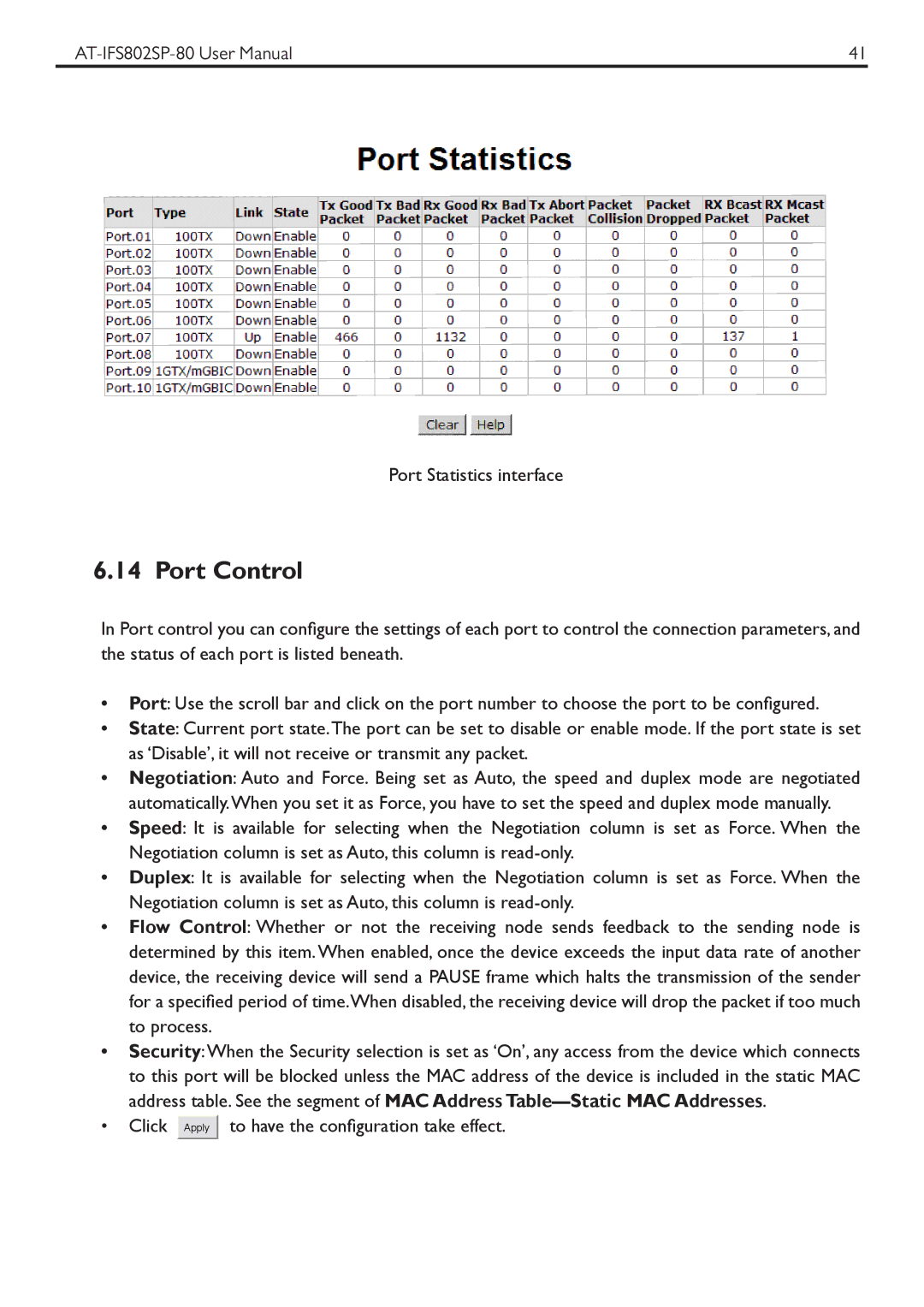
41 |
Port Statistics interface
6.14 Port Control
In Port control you can configure the settings of each port to control the connection parameters, and the status of each port is listed beneath.
•Port: Use the scroll bar and click on the port number to choose the port to be configured.
•State: Current port state.The port can be set to disable or enable mode. If the port state is set as ‘Disable’, it will not receive or transmit any packet.
•Negotiation: Auto and Force. Being set as Auto, the speed and duplex mode are negotiated automatically.When you set it as Force, you have to set the speed and duplex mode manually.
•Speed: It is available for selecting when the Negotiation column is set as Force. When the Negotiation column is set as Auto, this column is
•Duplex: It is available for selecting when the Negotiation column is set as Force. When the Negotiation column is set as Auto, this column is
•Flow Control: Whether or not the receiving node sends feedback to the sending node is determined by this item. When enabled, once the device exceeds the input data rate of another device, the receiving device will send a PAUSE frame which halts the transmission of the sender for a specified period of time.When disabled, the receiving device will drop the packet if too much to process.
•Security:When the Security selection is set as ‘On’, any access from the device which connects to this port will be blocked unless the MAC address of the device is included in the static MAC address table. See the segment of MAC Address
•Click Apply ![]() to have the configuration take effect.
to have the configuration take effect.
